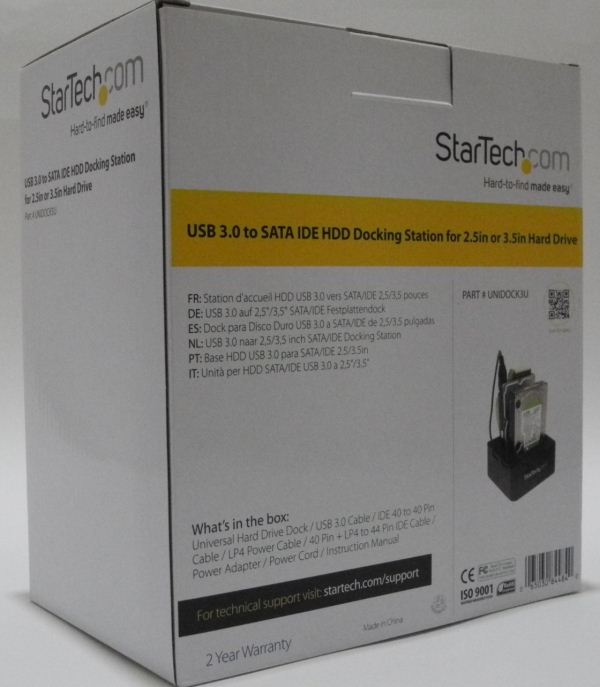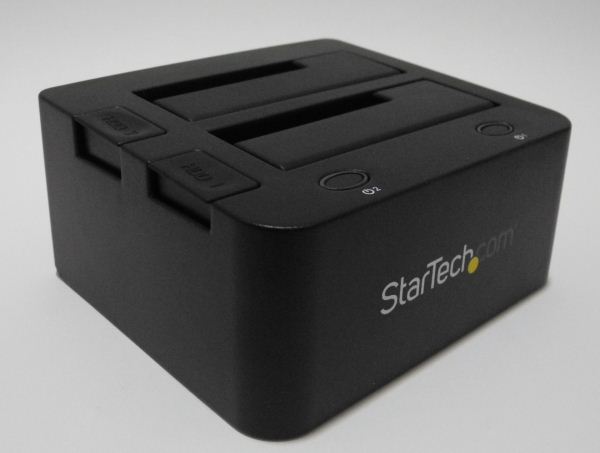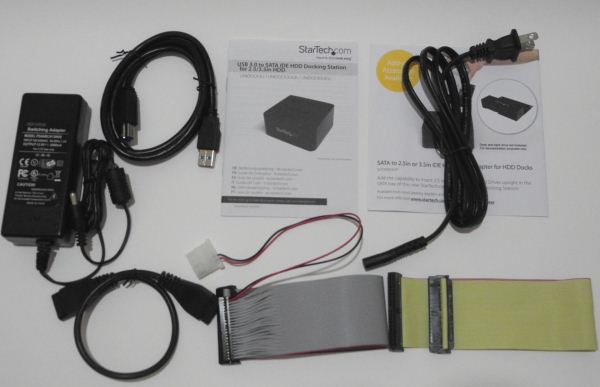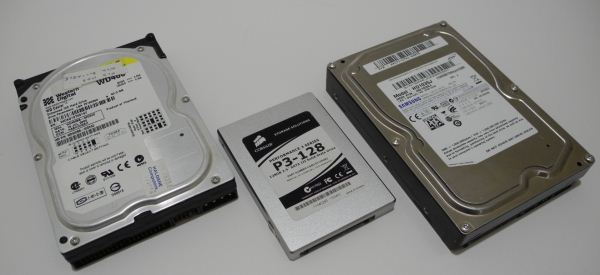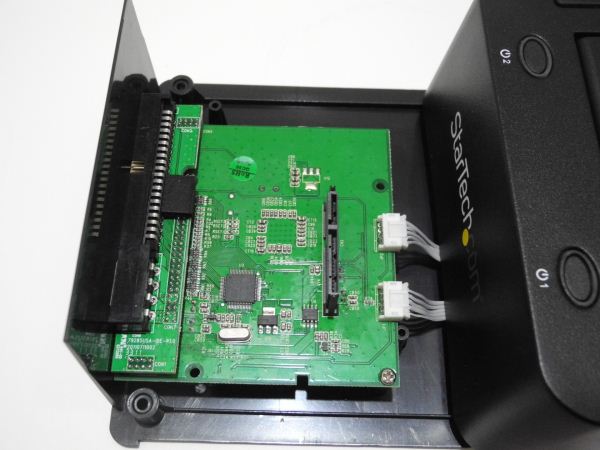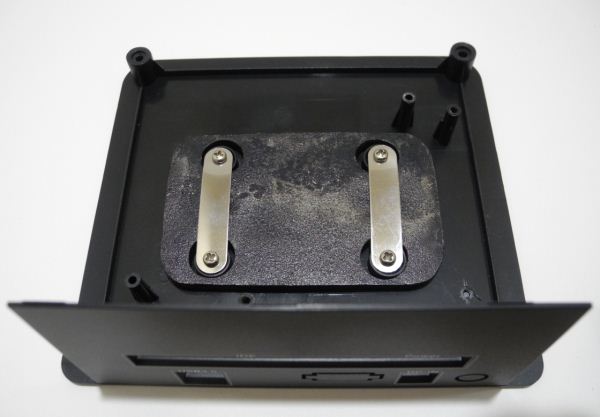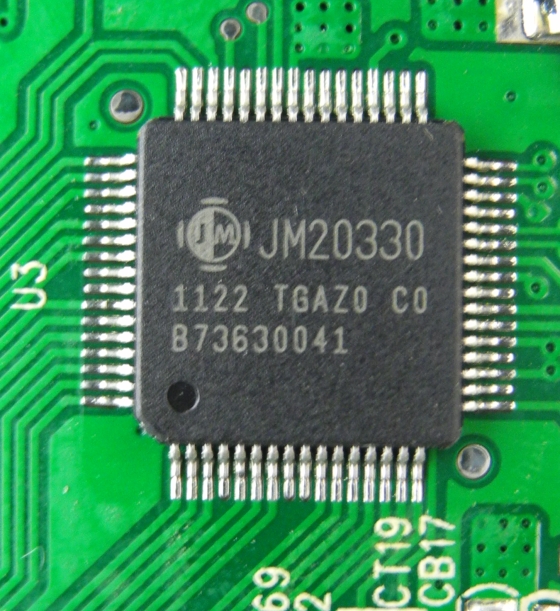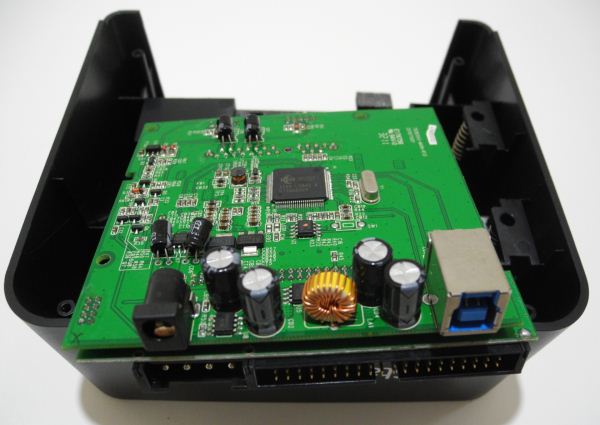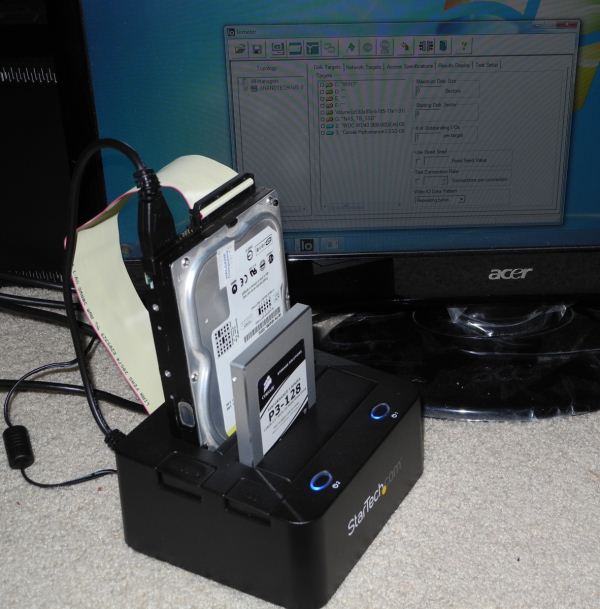
Original Link: https://www.anandtech.com/show/6014/startechcom-usb-30-to-sata-ide-hdd-docking-station-review
StarTech.com USB 3.0 to SATA IDE HDD Docking Station Review
by Ganesh T S on June 18, 2012 1:30 PM ESTStarTech.com specializes in gadgets performing niche, yet handy functions. We reviewed their portable SATA duplicator last year, and this time around we have another interesting gadget from their stables. SATA and IDE hard drive docks / enclosures are a dime a dozen. However, the combination of features provided by the StarTech.com USB 3.0 SATA/IDE HDD docking station persuaded us to get a unit in-house for evaluation.
The unit supports upright docking of up to two disks (one SATA and one IDE). Both 2.5" and 3.5" drives can be used. Simultaneous access to both slots is also allowed. USB 3.0 (backward compatible with USB 2.0) is the only mode of communication between the PC and the dock.
Apart from the main unit pictured above, the package comes with the following components:
- 36W switching adapter with US power cord
- 1 x 3ft. USB 3.0 A Male to B Male cable
- 1 x IDE 40 to 40-Pin Cable (for 3.5" IDE drives)
- 1 x LP4 Power Cable (for 3.5" IDE drives)
- 1 x 40-Pin + LP4 to 44-Pin IDE Cable (for 2.5" IDE drives)
- Instruction Manual
For the purpose of testing out the unit, we used the following drives:
- Western Digital Caviar WD400 40GB IDE HD WD400BB-00DEA0
- Samsung HD103SJ 1000 GB 7200rpm SATA HD
- Corsair Performance 3 Series SATA III SSD CSSD-P3128GB2
While the WD and Corsair units were used for testing performance, the Samsung unit was used to check up on the power consumption profile of the unit under typical operating conditions. The Corsair SSD was also securely erased prior to the benchmarking in order to restore it to the optimum performance level. The IDE drive wasn't recognized with the jumper settings in Slave mode. Removing the jumper completely enabled access to the drive.
On the host side, we used our Ivy Bridge HTPC setup based on the Asus P8H77-M Pro motherboard. The H77 chipset provides native USB 3.0 and this rules out any performance limitation on the testbed side. The full specifications are provided below.
| StarTech.com USB 3.0 to SATA IDE Docking Station Testbed Setup | |
| Processor | Intel Core i7-3770K - 3.50 GHz (Turbo to 3.9 GHz) |
| Intel HD Graphics 4000 - 650 MHz (Max. Dynamic Frequency of 1150 MHz) | |
| Motherboard | Asus P8H77-M Pro uATX |
| OS Drive | Seagate Barracuda XT 2 TB |
| Secondary Drives | Kingston SSDNow V+ 128 GB SATA II SSD SNV325-S2/128GB |
| Corsair Performance 3 Series SATA III SSD CSSD-P3128GB2 | |
| Memory | G.SKILL ECO Series 4GB (2 x 2GB) SDRAM DDR3 1333 (PC3 10666) F3-10666CL7D-4GBECO CAS 9-9-9-24 |
| Case | Antec VERIS Fusion Remote Max |
| Power Supply | Antec TruePower New TP-550 550W |
| Operating System | Windows 7 Ultimate x64 SP1 |
| Display | Acer H243H |
| . | |
Note that the Asus P8H77-M Pro motherboard has USB 3.0 Boost, which can be used to improve the performance of storage devices connected to its USB 3.0 ports. In the Turbo mode, the BOT (Bulk Only Transport) protocol is used to improve performance (and is supported by all USB devices). USB 3.0 boost can also operate in UASP (USB Attached SCSCI Protocol) mode if the controller on the device side supports it. UASP allows multiple commands to be in transit between the host and the device at any given point of time.
For the purpose of our testing, we operated in default mode (without Turbo or UASP). This should give us an idea of the minimum performance level which can be obtained from the unit. However, we will also see whether Turbo or UASP mode makes any difference to the benchmark numbers.
The docking station was quite easy to take apart after removing the four screws at the bottom of the unit.
Since the unit has the tendency to become a bit top heavy due to the upright mounting of hard drives, we have some ballast at the bottom to lower the center of gravity.
JMicron's JM20330 is the PATA to SATA bridge chip for the IDE drives (PDF Specifications) mounted on the underside of the PCB. It supports up to 1.5 Gbps transfer rate which should be plenty for all IDE drives.
JMicron's JMS551 is the USB 3.0 to dual SATA 3G bridge. One of the SATA ports is connected to the JM20330, while the other is connected to the SATA connector on-board. The bridge is compliant with SATA II (3 Gbps) specifications. The chip doesn't support UASP (USB attached SCSI protocol). However, it does have some low power mode support which allows the disks to spin down after being inactive for some time.
For readers curious about how a loaded dock would look like when connected to a system, the following picture should prove helpful.
We used two different approaches to benchmark the docking station. In order to get a quick idea of the capabilities of the unit, we used HD Tune Pro's benchmarks on both the Corsair Performance 3 SSD (connected through the SATA slot) as well as the Western Digital EIDE drive (connected to the IDE slot). After this, we shifted our focus to IOMeter and performed the four corners test (4KB Random Read / 4KB Random Write / 128KB Sequential Read / 128KB Sequential Write) as well as the disk performance bench (described here). First, let us take a look at the HD Tune Pro results.
The gallery below presents the various HD Tune Pro benchmarks performed on a raw drive connected to the SATA slot. The Corsair P3 128 GB SSD achieves an average of around 170 MBps and 150 MBps in sequential reads and writes respectively. Very small transfer sizes (such as 512B) bring about a large penalty, with speeds reducing to as low as 1.7 MBps reads and 4.2 MBps writes.
Moving on to the IDE slot, we repeated the above benchmarks. Sequential transfers benchmark around 17 MBps and 39 MBps for reads and writes. Small transfer sizes bring it down to 35 KBps and 55 KBps.
Our IOMeter benchmarks also present similar results. The graph below shows the SATA slot performance over USB 3.0. We also show the performance obtained by connecting the Corsair P3 SSD directly to one of the SATA 6 Gbps ports. In addition to the standard IOMeter tests, we also performed some robocopy benchmarks by transferring a Blu-ray folder structure of the HQV 2.0 Benchmark disc from local storage to the drive in the external dock and back to the local storage. Note that the robocopy benchmark speeds in the direct SATA case are probably held back by the speed of the local storage (a Kingston SSDVNow 128 GB SSD which doesn't have a SATA 6 Gbps controller).
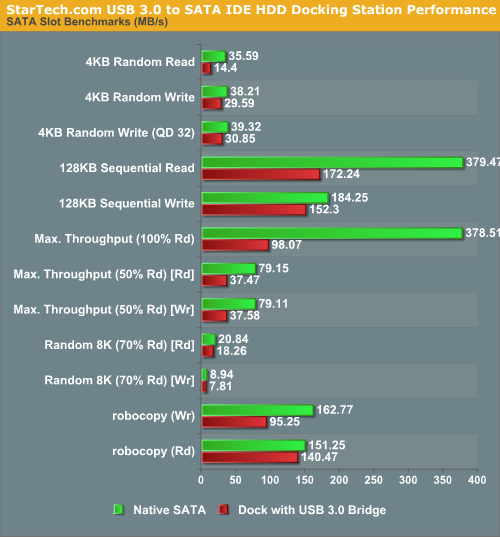
Enabling Turbo mode in the Asus control utility did improve read performance a little bit, but actually made the write performance worse. Note that UASP is not supported.
| StarTech.com USB 3.0 SATA IDE HDD Docking Station [ SATA - USB 3.0 robocopy Benchmark ] | ||
| Operation | Bandwidth (Normal) | Bandwidth (Turbo) |
| Write | 95.25 MBps | 69.24 MBps |
| Read | 137.12 MBps | 150.59 MBps |
The IOMeter and robocopy tests were repeated on the IDE drive also. However, we didn't take the trouble to verify Normal vs. Turbo mode with the IDE drive.
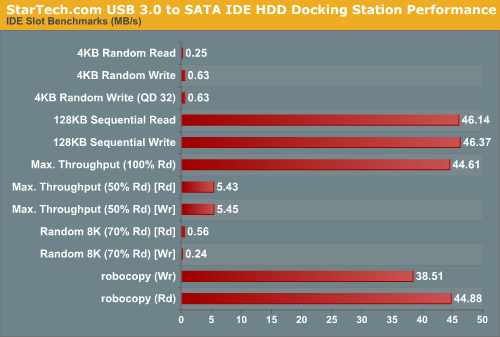
We also tried simultaneous IOMeter benchmarks on both slots. While the unit is indeed capable of dual slot operation, we found that the IDE slot occupied the major time slots in the random workloads. The bandwidth and average response times in the graphs below shed more light.
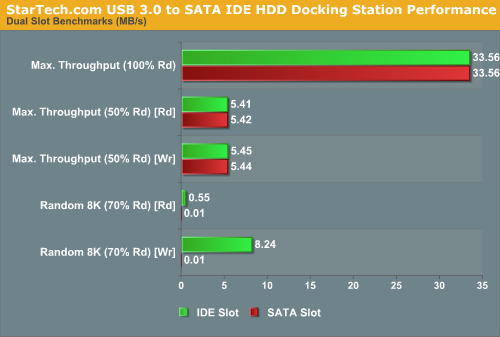
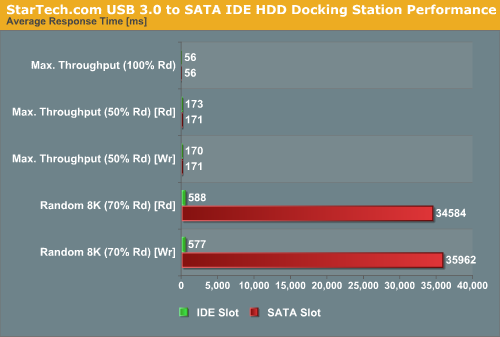
We are not sure if the results are an indication of the way IOMeter operates, or it has something to do with the bridge controller. In any case, most scenarios involving dual slot operation should not involve too many random transfers and in that case, the bandwidth is shared equally between the two slots (and held back by the slower of the two).
Given the benchmark figures in the previous section, the pros and cons of the StarTech.com SATA / IDE to USB 3.0 docking station must be quite evident by now. Before summarizing those points, let us take a look at the power consumption of the unit. We used a Samsung SATA hard drive (HD103SJ) in this test as well as the Corsair SSD to gauge these numbers for the SATA slot. The table below presents the power consumption under various conditions.
| StarTech.com USB 3.0 IDE SATA HDD Docking Station - Power Consumption | |||
| SATA Slot | IDE Slot | Activity | Power Consumption |
| None | None | SATA Powered On | 2.4 W |
| None | None | IDE Powered On | 3.0 W |
| None | None | SATA and IDE Powered On | 3.0 W |
| Samsung HDD | None | Idle | 8.6 W |
| Samsung HDD | None | Disk Spun Down | 3.2 W |
| Samsung HDD | None | 4KB Random Read | 10.5 W |
| Samsung HDD | None | 4KB Random Write | 9.5 W |
| Samsung HDD | None | 128KB Sequential Read | 11 W |
| Samsung HDD | None | 128KB Sequential Write | 10.8 W |
| Corsair SSD | None | Idle | 3.0 W |
| Corsair SSD | None | Disk Spun Down | NA |
| Corsair SSD | None | 4KB Random Read | 3.4 W |
| Corsair SSD | None | 4KB Random Write | 4.7 W |
| Corsair SSD | None | 128KB Sequential Read | 4.3 W |
| Corsair SSD | None | 128KB Sequential Write | 5.4 W |
| None | WD EIDE HDD | Idle | 10.1 W |
| None | WD EIDE HDD | Disk Spun Down | 3.7 W |
| None | WD EIDE HDD | 4KB Random Read | 11.4 W |
| None | WD EIDE HDD | 4KB Random Write | 10.6 W |
| None | WD EIDE HDD | 128KB Sequential Read | 11.9 W |
| None | WD EIDE HDD | 128KB Sequential Write | 11.8 W |
The unit doesn't have any active cooling, which means it is completely silent. The hard drives are also not in any enclosed space, and as long as the unit is subject to airflow during operation, overheating is not a concern.
Coming to the business end of the review, we can say that the dock is an acceptable solution for users looking to access the data in their IDE drives on modern machines. On the SATA front, the unit faces stiff competition from the host of other cheaper SATA to USB 3.0 adapters. This unit is currently priced at $62 on Amazon. Pure SATA to USB 3.0 adapters are available for as low as $27. IDE/SATA to USB 3.0 combos are available for $40, although the industrial design appears very fragile (similar to the SATA duplicator from StarTech.com that we reviewed earlier). For approximately $22 more, we have a better looking unit which also appears to be more sturdy and saves space by allowing for upright mounting of the drives. However, for this cost, we would expect the USB 3.0 bandwidth to be fully utilized using a SATA 6 Gbps bridge chip. For $27, Vantec seems to be able to offer a SATA 6 Gbps to USB 3.0 5Gbps adapter.
The lack of UASP support which has the potential to increase the storage bandwidth is disappointing. We raised concerns about the fragility of the power adapter cords in the SATA duplicator review, and unfortunately, the dock we are covering today has the same issues. It is also not possible to have 2.5" SATA drives powered over the USB 3.0 port.
StarTech.com has a number of interesting hard-to-find gadgets in their arsenal. The current docking station is one of the few models available which supports both SATA and IDE drives over USB 3.0. In the next iteration, we would like StarTech.com to include full 6 Gbps support, UASP as well as the ability to power 2.5" drives over the USB 3.0 port. The industrial design is perfectly fine and needs no fine tuning.
In conclusion, the dock does fulfill the needs of users wanting to use their SATA hard drives and IDE drives at the maximum possible speed in space-constrained setups. Our main concern is with respect to the value for money. At $62, we feel is it is overpriced for the features offered. We will leave it to our readers to be the final judge.

